Page
Last Updated:
Wednesday, 04 November 2015 13:35 EDT, © 1965 by Torii
Teller, 2003, 2007, 2008, 2010
Swordmaker & Art Collector
Torii Teller, Iwakuni
Weekly, June 7 1965
Sgt. D. C. Preston, Editor; Sgt. John G.
McCullough, LCpl. Alex Wasinski, Photographers
Dean Hartley was a 14-year-old lad who had outgrown his
homemade wooden sword back in South Carolina when Kunitoshi
Fujimura forged his first steel sword in Iwakuni, Japan. That was
back in 1935, before either of them could possibly know that
swords would kink them into an unique friendship.
Dean Hartley is now a colonel in the Marine Corps, and swords
are no longer toys. The study and collection of ancient blades is
an art form, and Col. Hartley is recognized as one of America's
foremost authorities on Japanese swords. He is certainly the most
avid collector in the Corps.
| Colleague. Fujimura is one of only
200 licensed swordsmiths in Japan today; only four are
fulltime swordmakers. Fujimura is one of the latter. His
intricate, painstakingly exact copies of old swords have
earned him international acclaim. Col. Hartley and
Fujimura have known each other for seven years. "I
first met him when I flew into Iwakuni on a visit,"
the colonel explained last week before he left Iwakuni
again. "I was an amateur then and Mr. Fujimura was
already a noted swordsmith. But he welcomed me as if I
were a colleague. I've learned a lot from the old
gentleman, especially this last year."
During the past year Col. Hartley was comptroller for
the 1st Wing. He is now enroute to his new job on the
staff of the Naval War College in Newport, R.I. But he
plans to return to Iwakuni someday, to spend more hours
in the combination home and shop of the 73-year-old
artist.
"Really Hooked." Col. Hartley
became interested in Japanese swords 10 years ago... "after
I'd read a book describing rare swords, then almost immediately
spotted one in a store in Washington, D.C."
Out of the first 10 swords the colonel collected, six were
rarities sought by sword fanciers for years...an astonishing
start for a neophyte.
"I really got hooked then," understated the colonel.
By "hooked" he meant that he began researching the
nuances of sword collecting. "I found that the research --
getting ancient transcripts, collectors' studies, etc. -- was
almost as expensive as getting the swords, " Col. Hartley
added.
But the research cost was refunded in a number of ways. The
colonel's reputation as a collector caused him to be elected
president last year of the Nanka Token Kai (Southern Sword
Society) in Los Angeles. He also belongs to the Nihon Bijutsu
Token Hozon Kyokai (Society for the Preservation of Japanese Art
Swords) and the Japanese Sword Society of the United States.
|

HARTLEY & FUJIMURA: Welcomed as a colleague |
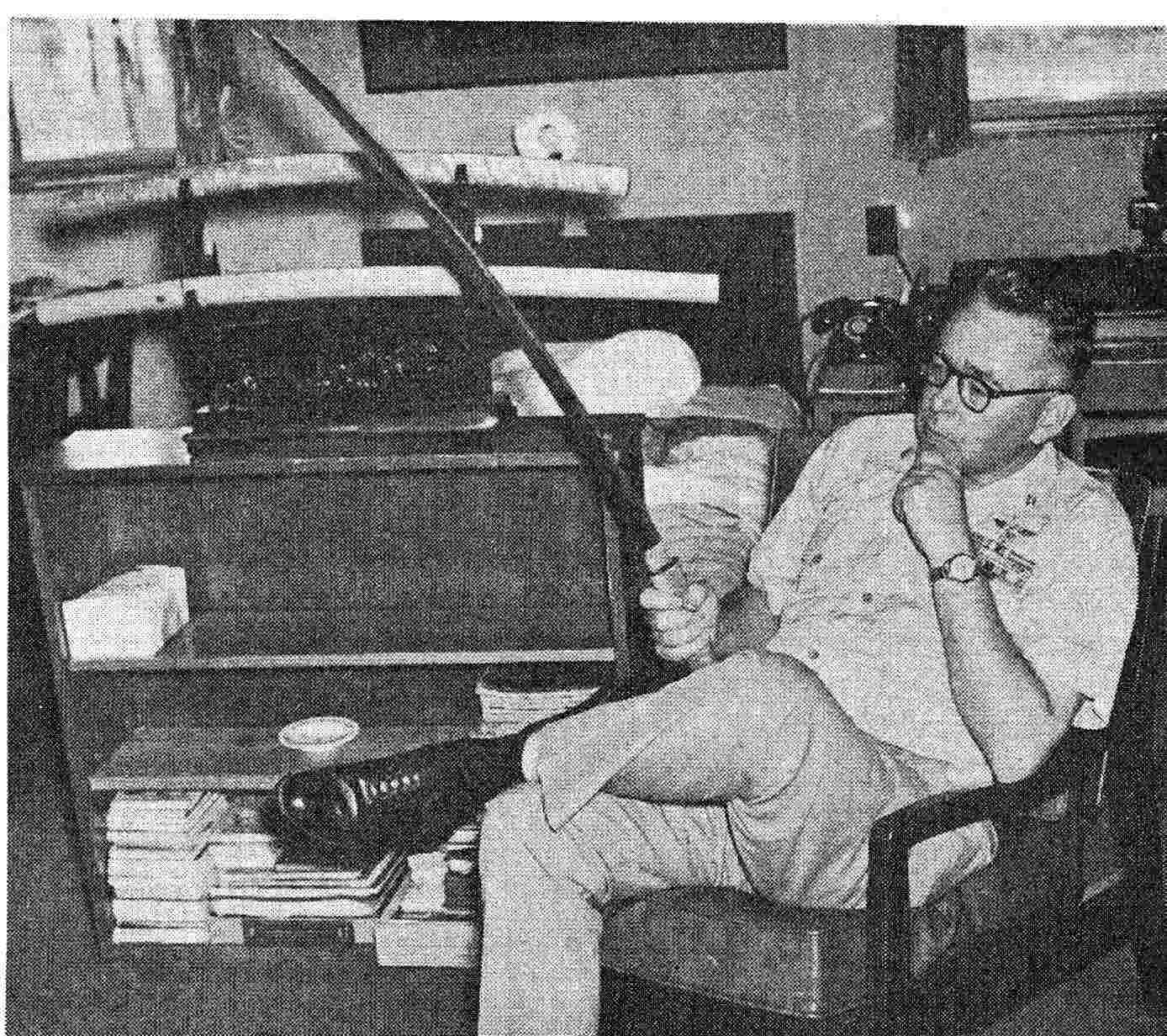
COLLECTOR HARTLEY AND SAMURAI SWORD: An astonishing start
for a neophyte |
Sword Snob. He has also amassed an envied
collection of blades. Of the 65 swords in his collection, 55 are
masterpieces worth thousands of dollars; one sword, a
900-year-old Tachi, is considered in the art category of
"priceless."
The colonel's research collection has made him a sword snob.
"Japanese makes are the only items of art in the sword
world today," he said. "Well, there may be a few Persian
and possibly some Damascene swords worth looking at, but only in
Japan are swords made today exactly as they were before recorded
history."
It was that fact which drew Col. Hartley to Kunitoshi
Fujimura. It takes the venerable swordsmith a month to forge,
temper, polish and engrave a single sword. He will not use steel
or iron unless it's already hundreds of years old. Then he melts
it down, flakes it, stacks it and pounds it into shape time and
again. Each step of the process follows a pattern thousands of
years old. He tempers the blade into precision with the help of
chemicals, the compound of which is as closely a guarded secret as
the combination to Fort Knox.
|
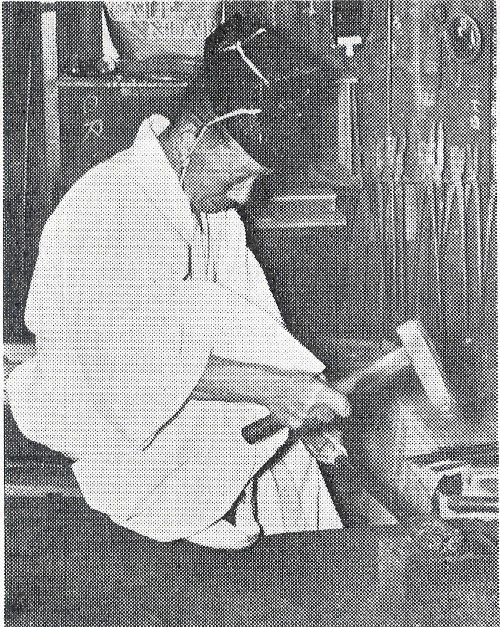
BEGINNING OF SWORD: |
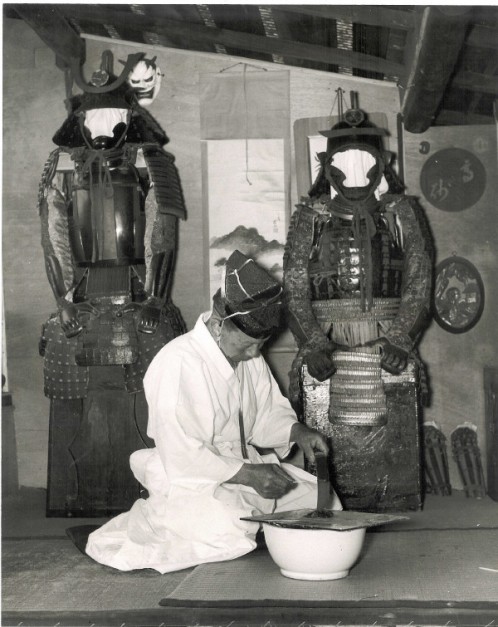
Old metal, a secret... |
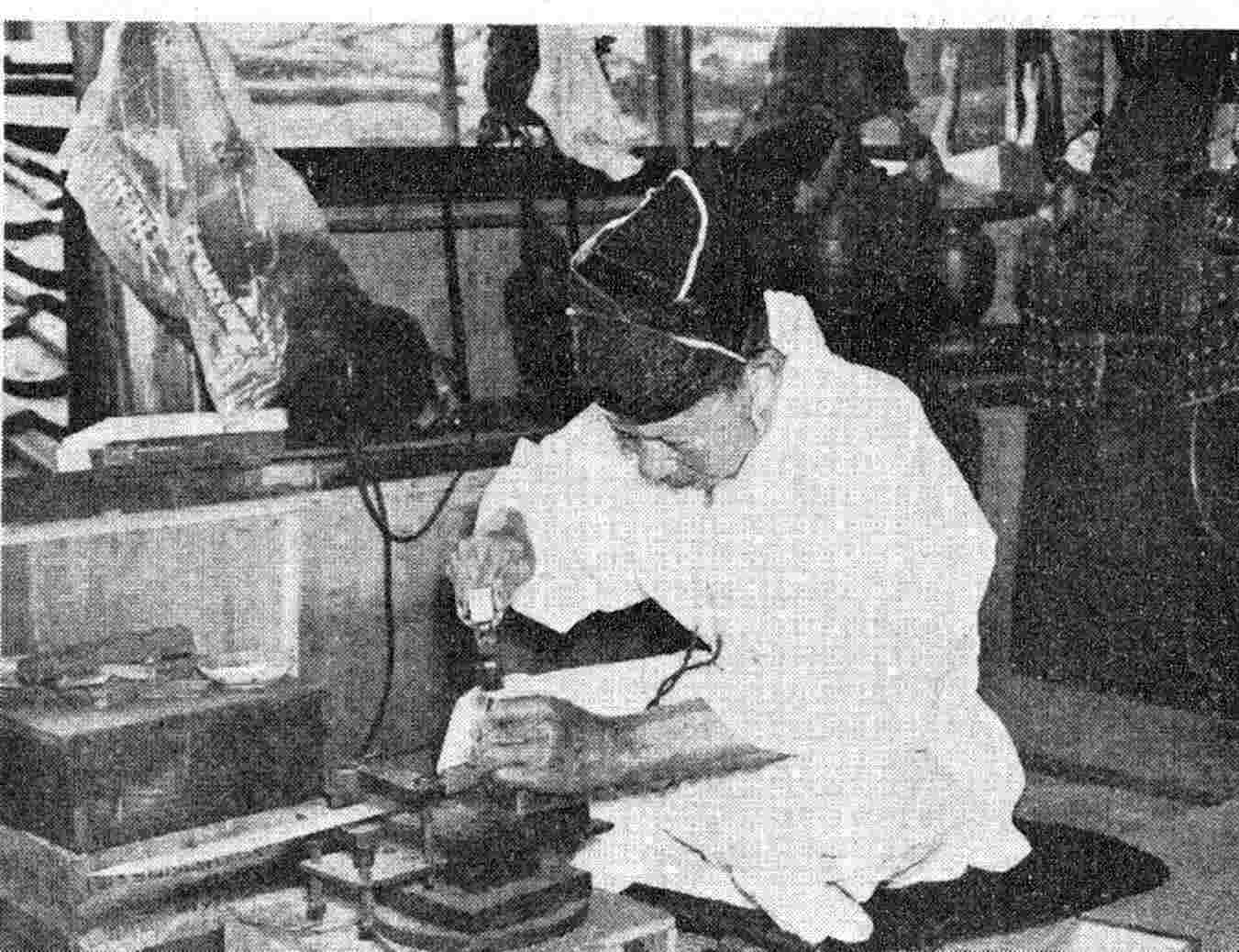
SWORDSMITH FUJIMURA AT WORK IN HIS SHOP: ...formula, and
the
venerable artist produces a rare blade. |
| "The Old Ways." Then he
keeps the sword. He places it in national competitions,
many of which he's won, then loans it for display at
castles-now-museums which are as old as the smithing
process. "I've never bought a sword from Mr.
Fujimura," Col. Hartley said. "Ours isn't a
retail association. I respect his craftsmanship and
adherence to the old ways. That's why I selected him to
be an advisor to the Nanka Token Kai."
There is one "adherence to the old ways"
which Fujimura doesn't abide by, however. In medieval
days, every sword was tested and the results inlaid in
gold on the blade's tang, which is set into the grip. The
cutting test was made, more often than not, against human
bodies. Col. Hartley owns a sword which, hundreds of
years ago, sliced through seven bodies in a single
stroke!
Today's cutting tests are more humane. If body texture
is desired by a testing supervisor (who is never the
swordsmith), he uses specially prepared manikins.
Which seems to please everyone concerned.
|

ARTIST AND
MEMENTOS: Adherence to the past |
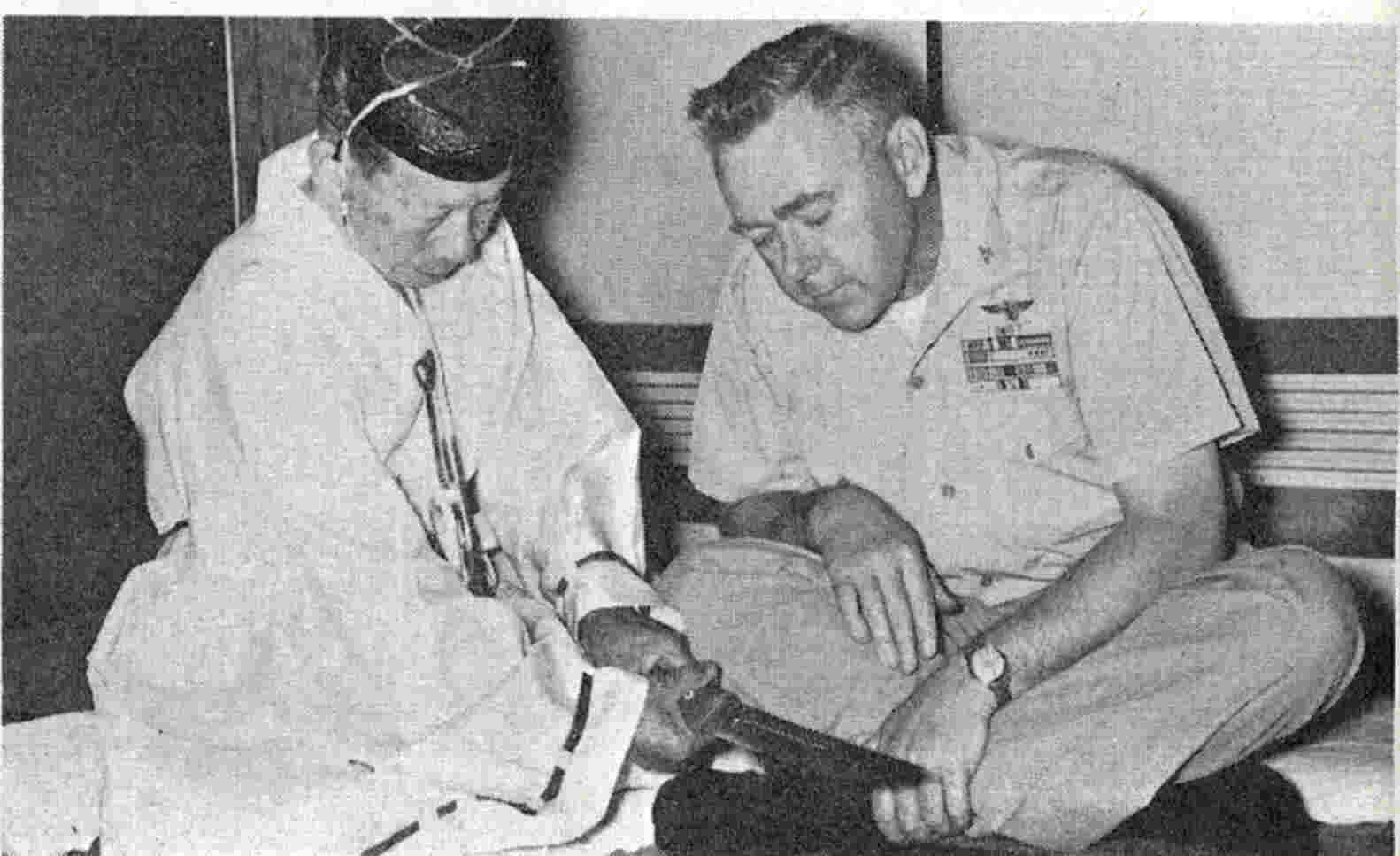
FUJIMURA AND HARTLEY WITH NEW BLADE: They don't use human
bodies any more. |
Additional Photos

Fujimura
Kunitoshi starting to hammer tomahagane (first real step in sword
making). |
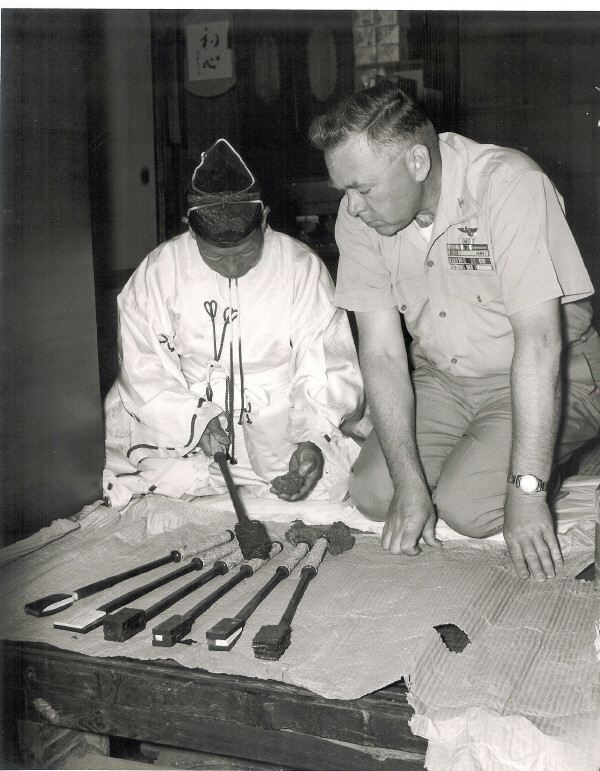
The "set" of forging steps Kunitoshi-San (his art name) gave Col.
Hartley for the Nanka Token Kai. |

"Guardian Sword" being carried to Iwakuni Castle, blade made by Fujimura
Kunitoshi |
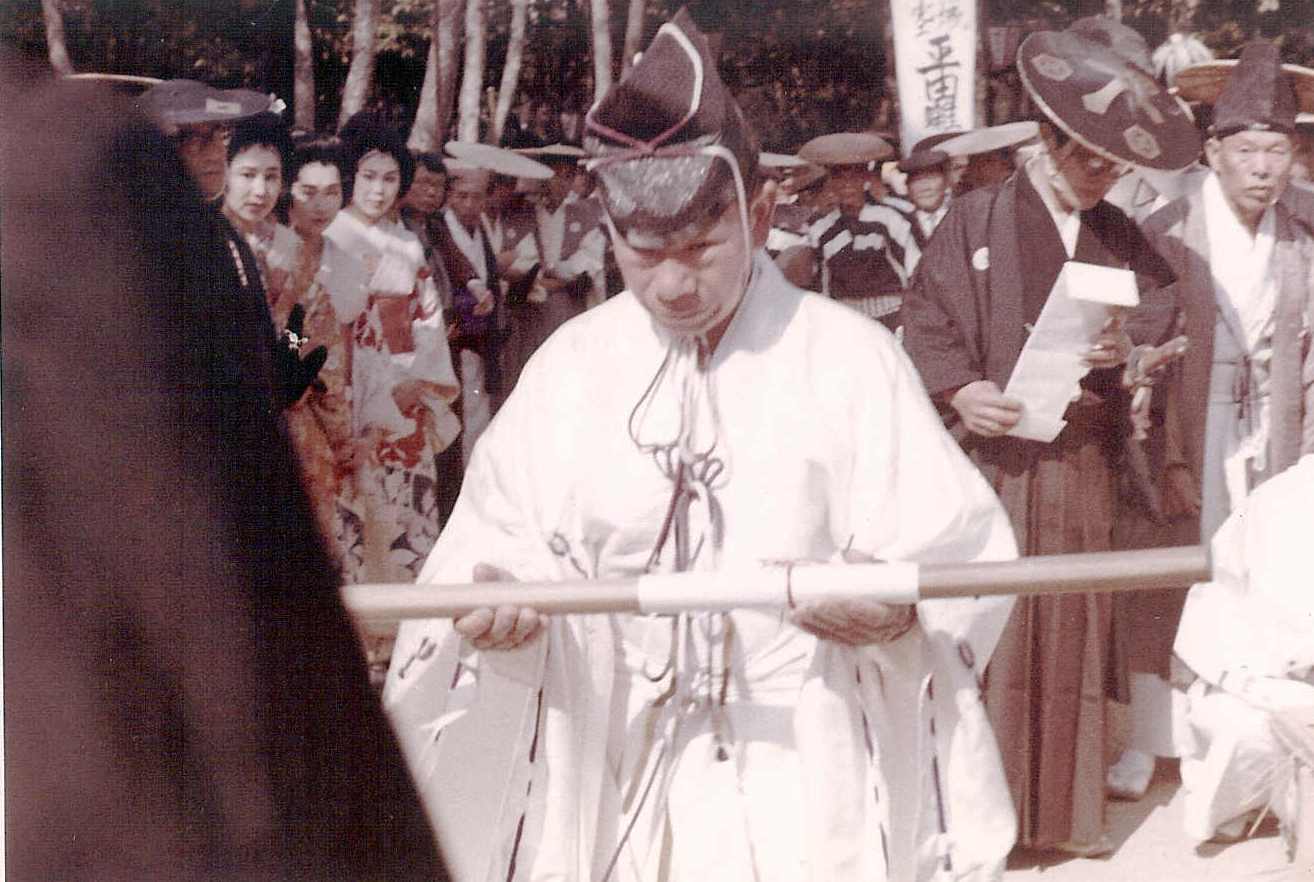
Fujimura Kunitoshi presents "Guardian Sword" he made for Iwakuni Castle
to Mayor Doi |

Hartley presents certificate from the Nanka Token Kai to Mr. Fujimura |
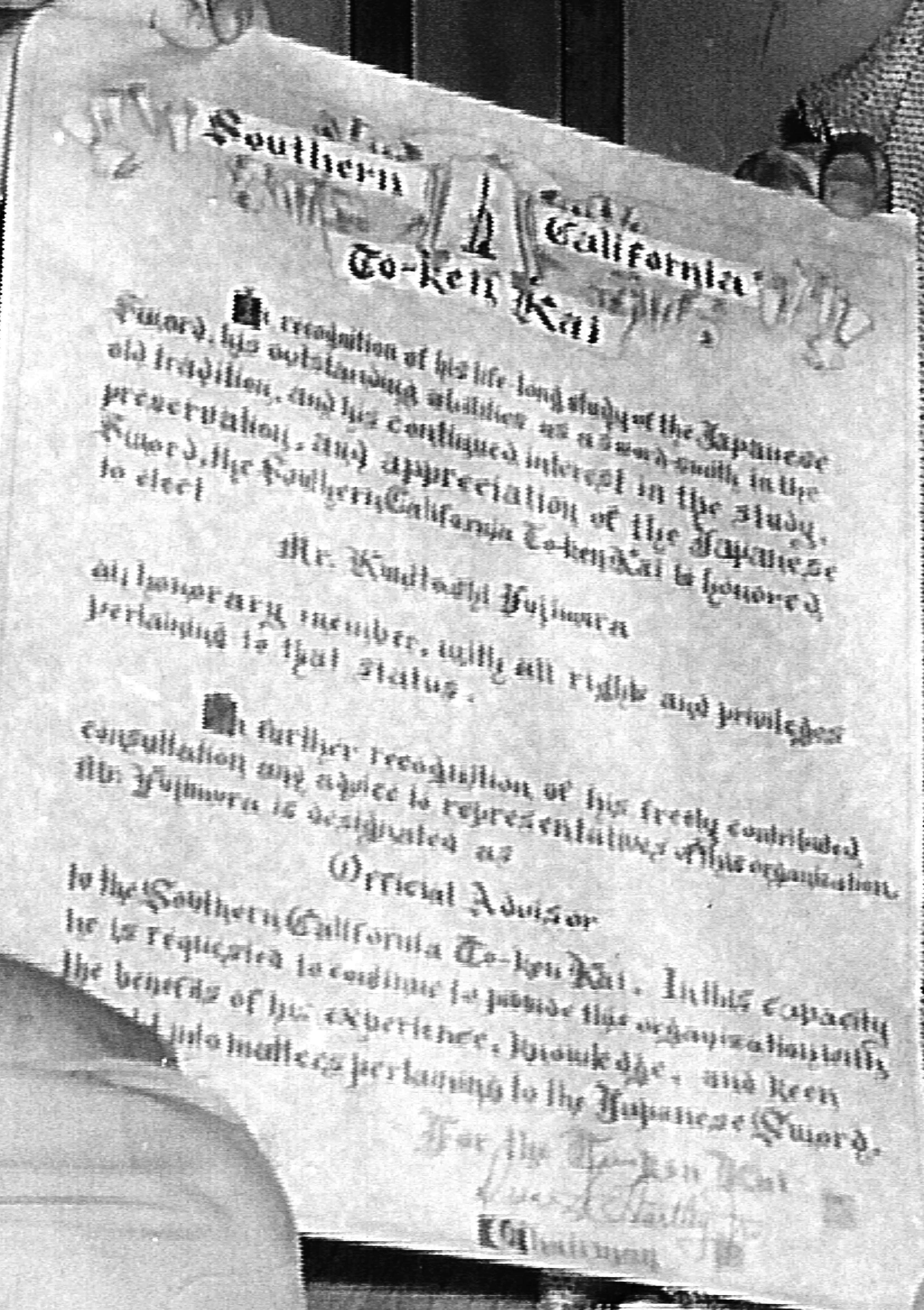
Certificate of honorary membership and designation as Official Advisor |

Choosing sword for inspection. The top blade is a Ko-Bizen Masazane, ca.
1065, certified by Dr. Homma. |
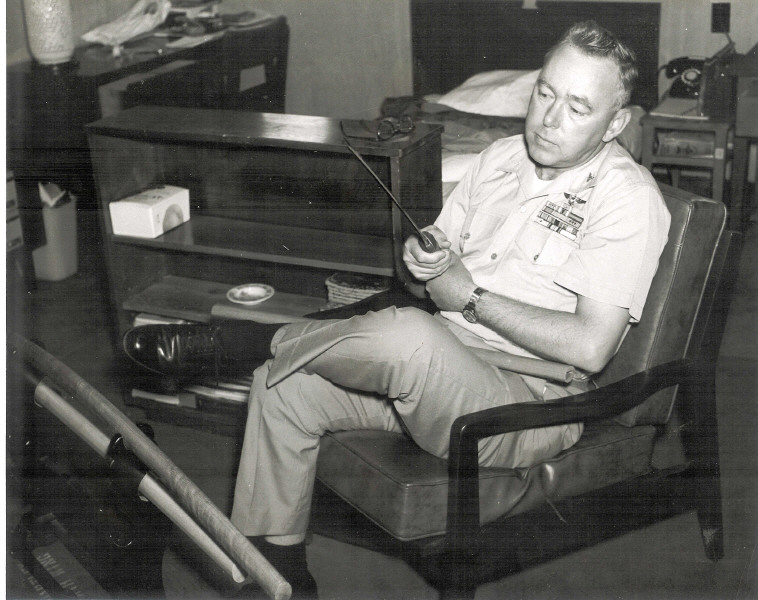
Viewing a sword. |
 Return to
Hartley's Main Page
Return to
Hartley's Main Page
Website created by Dean S. Hartley III.















